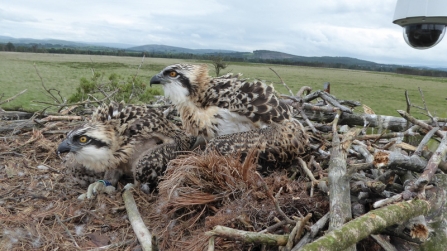It is important when ringing ospreys to get the timing right. As the chicks are fitted with adult rings they need to have developed enough so that the ring will be secure and not fall off, but they also have to be young enough that they will not try to leave the nest when approached by the specialist ringer.
On the afternoon of the 30th June we set off to ring the chicks. The first challenge was to make our way across the treacherous bog that provides the ospreys with a safe nesting site.


